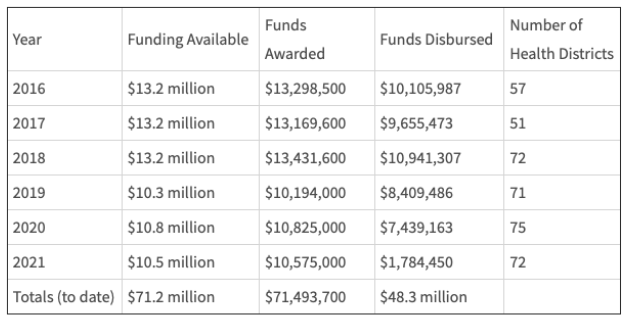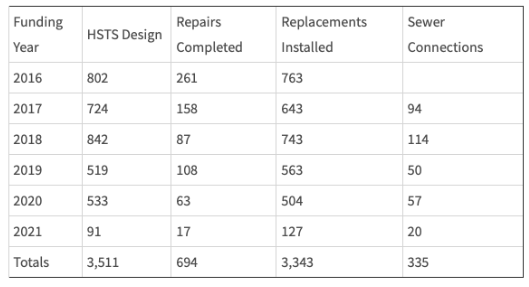Using the Clean Water SRF Program for Financing Septic Repairs and Replacement
By: Sion Calabretta and Sri Vedachalam
Onsite Septic systems or “septic systems” are commonly used to treat wastewater in urban and rural properties across the US. Poorly functioning or failing septic systems are a threat to public health and the environment, and can even make homes unlivable. However, not all property owners can afford to repair or replace these systems on their own as they can be fairly expensive. The Ohio State Department of Health estimates the average cost of a conventional septic system to be $8,000 to $10,000; alternative systems that are sometimes needed to meet challenging site conditions can be even more expensive. With an estimated 1 million septic systems in Ohio, inaccessibility to repairs and replacement poses a health risk to water systems and public health. Federal funding such as the Clean Water State Revolving Funds (CWSRF) may not be available to all homeowners as it is subject to their state having a septic financing program and participation from the local municipality or health district.
The Ohio EPA administers the Water Pollution Control Loan Fund (WPCLF), providing funding to low and moderate income homeowners for Home Sewage Treatment System (HSTS) repair and replacement. The Ohio EPA distributes up to $150,000 in principal forgiveness loans to county health districts from the Clean Water State Revolving Funds (SRF). The funds are then utilized by the local health department to assist homeowner’s repair and replacement of failing septic systems. The program began in 2009; since 2016, the program has been in full swing serving nearly all counties in Ohio.
The program receives approximately $10,000,000 annually through the WPCLF. Not all of the funds are spent every year due to factors such as the health departments’ lack of resources, and recently, being overburdened by Covid-19. The Ohio EPA has disbursed $48 million for septic repair, replacement or sewer connections since the program began (Table 1). There are an estimated 300,000 failing septic systems in Ohio. WPLCF has replaced 3,343 systems, repaired 694 systems and connected 335 systems to sanitary sewers since 2016 (Table 2).
Table 1: HSTS Funding Through WPLCF
Table 2: Summary of HSTS Results
Funds are awarded to homeowners in the form of principal forgiveness grants from their health department. Unlike the program in Washington run by Craft3, Ohio's program requires the house to be owner-occupied. Depending on the income of the household, the WPCLF will cover a portion of the cost of replacement or repair (Table 3). Homeowners unable to qualify for funding but who still need assistance are often referred to other financing programs. The funds are directly distributed to the homeowners who then are responsible for finding and paying contractors. Homeowners are given 18 months to use funds for septic repair or replacement.
Table 3: HSTS Funding Through the WPCLF
The program does not serve mobile home residents because oftentimes mobile home parks do not meet guidelines for septics and other state programs specifically serve mobile parks. Some homeowners' land does not fit the requirements for septic systems so when septics fail, the best solution is connecting to an off-site sewer system. Close to 10% of the program's funds go to creating and connecting to off-site sewer systems.
Outreach for the program is targeted to county health districts. The Ohio EPA works to get as many health districts on board as possible so that all people in Ohio have access to the funding. The EPA has primarily used phone calls and direct connections with health districts to engage participation in the program. The Ohio EPA is responsible for producing an environmental review of how SRF money is being used. That review is then posted on health districts websites for community members to be able to see. They have plans to expand outreach to help get more money spent.
Ohio is hoping to expand the program with funds from the Infrastructure Bill, which includes $150 million over 5 years for septic repair and replacement. This could mean more people will have access to these funds. But it is all dependent on the health department's capacity to distribute more funds, which is currently low due to Covid-19. As long as the EPA continues to allow principal forgiveness, this program will continue forward in bridging the gap in access to wastewater systems. For the Ohio EPA, the program takes little work, yet has huge outcomes helping more than a thousand households every year. WPCLF shines a light on what is possible when SRF funds are put to use to repair, replace, and install septic systems in rural and low-income communities.
Note: This write-up was based on publicly available information and an interview with senior officials at Ohio EPA.





